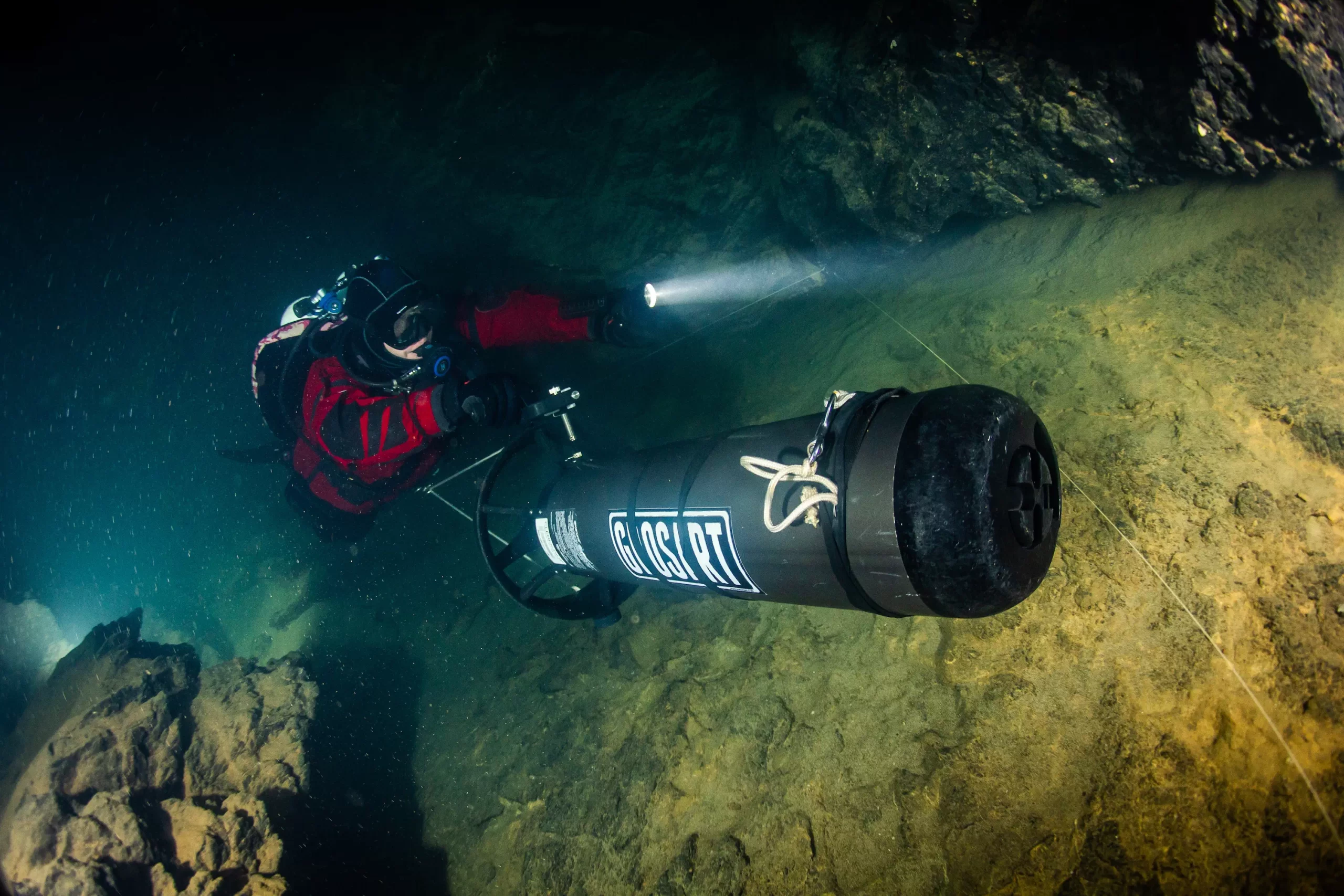The objective was to explore virgin cave passages both underwater and above, using advanced cave diving and caving techniques. The expedition had three exploratory dives, with 601 m of new cave passages discovered. The total length of the cave is now 1.5 km, of which 1,125 m has been discovered by this team.
Read more on Izvor Licanke | Photo: Christine in sump 1 (© Richard Walker)
